In a website or application, the front end is what the user sees. Front-end web development also known as client-side development helps in creating HTML, CSS, and JavaScript for a website or web application so that a user can see and interact with them directly.
In the ever-changing industry of Information Technology, there is a diverse number of frameworks available for developers to choose from. Each framework offers a unique feature making it crucial for the developer to select the right one. Every business has its own goals, so the web or app should be developed accordingly.
Table of Contents
What is a Front End Developer?
Front-end developers use various tools depending on their skill set and the project they are working on. For example, they might use a CSS preprocessor such as Less or Sass to streamline the authoring of stylesheets. They might also use a task runner such as Grunt or Gulp to automate common tasks such as minification and linting. In addition, they might use a JavaScript library or framework such as React or AngularJS to make working with the DOM more efficient.
Roles of front-end developer
The role of a front-end developer has become increasingly important in recent years as the line between web and mobile apps has blurred. With the rise of responsive design, it’s now more important than ever for front-end developers to understand how HTML, CSS, and JavaScript work together. It’s also vital for them to be able to test their code across a variety of devices and browsers to ensure that it works as intended.
A front-end developer is responsible for the visual elements of a website. They work closely with web designers to create an appealing and user-friendly interface. In addition to design, front-end developers are also responsible for the functionality of the website. They code websites using HTML, CSS, and JavaScript. They also test the website to ensure that it is compatible with all browsers and devices. A front-end developer must have a strong understanding of web standards and be up-to-date with the latest trends in web design.
UI, UX, and front-end web developers are the ones responsible for applying interactive and visual design principles on websites and web applications and thereby ensuring a positive user experience. The scope of UI and UX designers is also equivalent to that of a front-end developer.
Benefits of Front-end Frameworks
As a web developer, you’re always looking for ways to streamline your workflow and make your life easier. One tool that can help you achieve this is a front-end framework. A front-end framework is a pre-packaged collection of tools and resources that can be used to build websites and web applications. Many developers find that using a front-end framework can save them a lot of time and effort, as it provides a solid foundation on which to build their projects.
There are many different front-end frameworks available, so it’s important to choose one that’s right for your needs. Some of the most popular options include Bootstrap, Foundation, and AngularJS. Each framework has its strengths and weaknesses, so it’s important to do some research to find the one that best suits your needs. In general, though, all front-end frameworks can offer the following benefits:
- Improved efficiency and productivity
- Standardized code Base
- Reduced development time
- Increased consistency across projects
- Cost efficiency
If you’re looking for ways to optimize your web development workflow, consider giving a front-end framework a try. You may be pleasantly surprised at how much time and effort you can save.
Top Front-End Development Frameworks
When it comes to front-end development, there are a lot of different frameworks to choose from. It can be challenging to know which one is right for your project. To help you decide, we’ve compiled a list of the top 10 front-end development frameworks. The following are the Top 10 Front End development frameworks;
- React
- Angular
- Vue.js
- Ember
- Preact
- Inferno
- Polymer
- Backbone.Js
- Knockout.js
- jQuery
1. React

React is a front-end development framework often used in conjunction with other frameworks, such as AngularJS. React has several benefits, including its declarative programming style, which makes code more readable and easier to debug. React is also efficient, thanks to its virtual DOM concept. This means that only the components that need to be updated are re-rendered, rather than the entire page. As a result, React apps can be fast and responsive.
ReactJS and React Native are well-known React front-end development frameworks. Each has its own advantages and disadvantages, so choosing the right one for your project is essential. ReactJS is a good choice for small projects, while React Native is better suited for large-scale apps. Whichever framework you choose, will help you create a fast and responsive front-end app.
2. Angular

Angular front-end development framework assists developers to create single-page applications. Angular is a TypeScript-based open-source web application framework led by the Angular Team at Google. Angular is used for building mobile and desktop web applications. It can also be used for creating Progressive Web Apps and NativeScript apps. Angular has a unique two-way data binding feature that allows for a more interactive user experience.
Angular is also known for its modularity, letting developers break down their code into small modules that can be reused in other projects. The Angular CLI (Command Line Interface) tool can be used to create, build, test, and deploy Angular applications. Angular Developer Tools are available for debugging Angular apps in Google Chrome and Microsoft Edge browsers.VS Code Editor can also be used to debug Angular apps.
3.Vue.js

Vue.js is an easy-to-use, fast-performing and versatile framework for building web user interfaces. This front-end development framework helps developers create user interfaces and single-page applications. Vue.js is designed to be easy to use and extensible, making it a popular choice for web development. It also provides a variety of features that make it well-suited to modern web development, including a virtual DOM, components, templates, and more.
The modularity of Vue.js also makes it easy to integrate into existing applications. In addition, Vue provides excellent documentation and support, making it a good choice for both experienced and beginner developers. Whether you’re looking to create a new application or add Vue to an existing one, Vue is an excellent choice for front-end development.
4. Ember
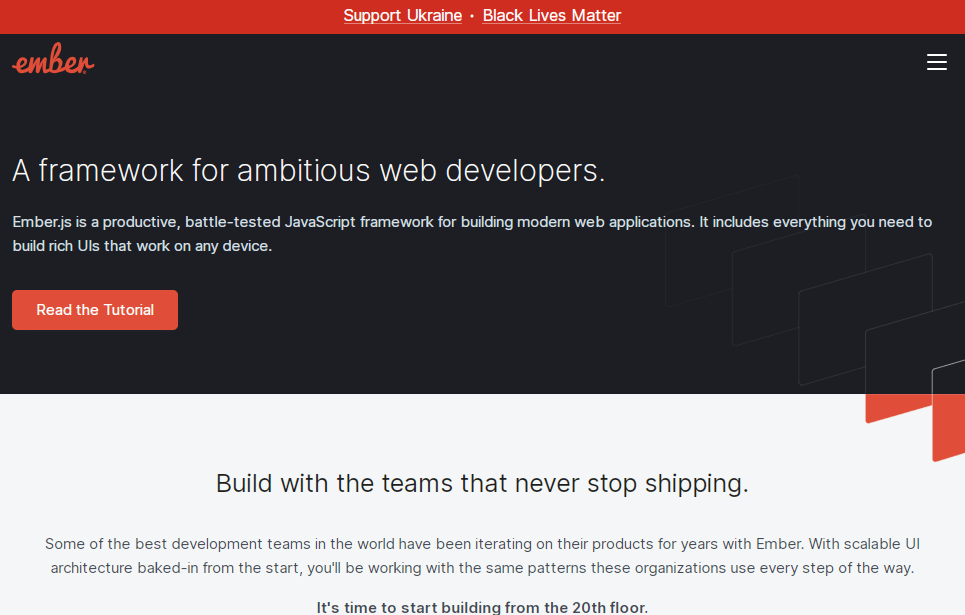
Ember is a front-end development framework that enables developers to create user interface (UI) applications. Ember is built on the Model-View-Controller (MVC) design pattern and provides a structured approach to browser-based application development. Ember’s goal is to make UI development more efficient by managing common UI development tasks such as rendering views, managing data bindings, and routing. Ember is open-source and released under the MIT license. Ember is currently maintained by the Ember.js Core Team, consisting of core contributors from various companies including Google, Yahoo!, and Microsoft.
5. Preact
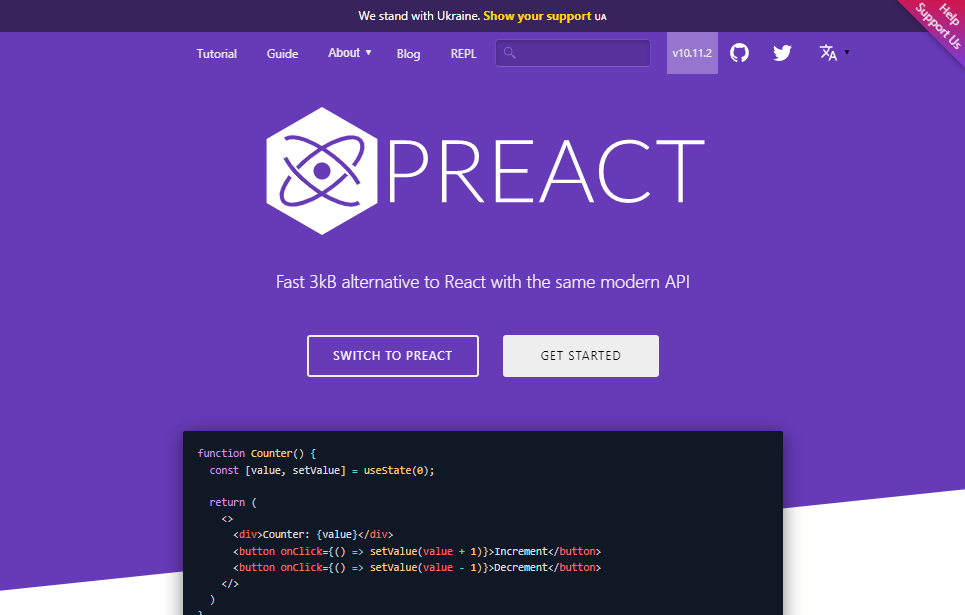
Preact is a front-end development framework that includes all the necessary tools for building user interfaces and web applications. Preact is lightweight and fast, making it ideal for developing performant and responsive user interfaces. Preact comes with a number of features that make development simpler and more efficient, including a declarative API, a small footprint, and support for JavaScripts. Preact also offers a number of add-ons that can be used to further extend the Preact framework. Preact is an excellent choice for any front-end developer looking for a performant and feature-rich development framework.
6. Inferno
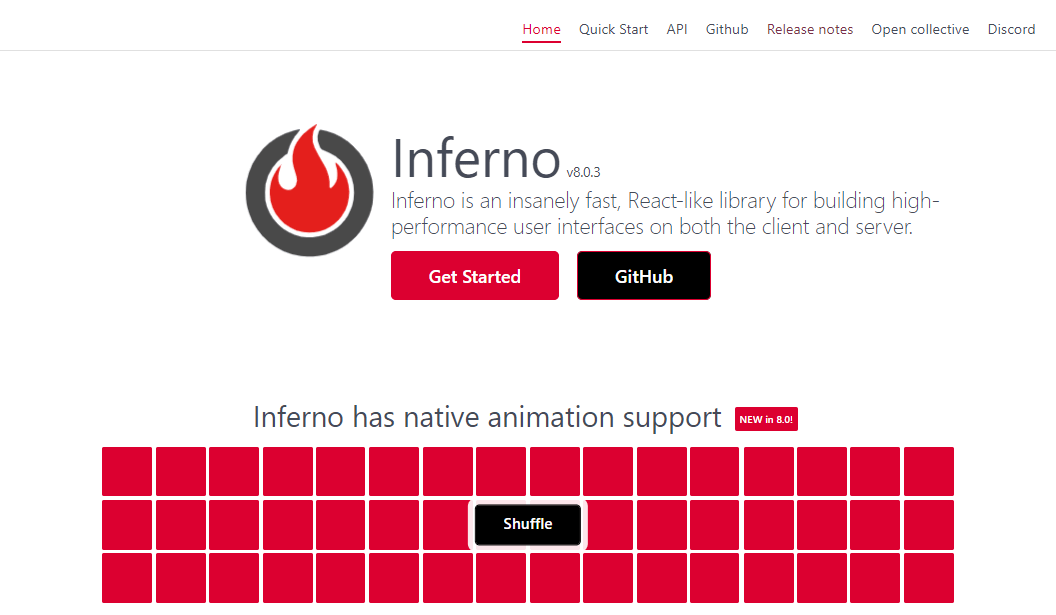
Inferno is a front-end development framework that helps developers create fast, responsive user interfaces. Inferno uses a virtual DOM (Document Object Model) to efficiently update the UI, making it ideal for applications that require fast performance. Inferno also includes a number of features that make it easy to develop responsive user interfaces, including a tiny footprint and built-in support for server-side rendering. In addition, Inferno is provided as open-source software under the MIT license, making it free to use in both commercial and personal projects. Overall, Inferno is an excellent choice for developers who need a fast, lightweight front-end development framework.
7. Polymer
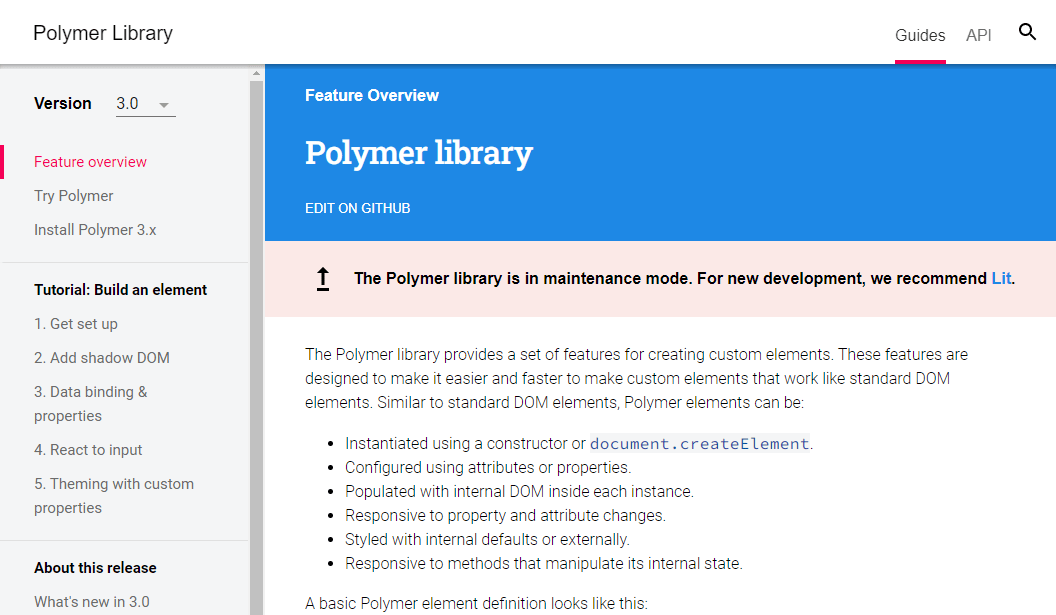
Polymer is a front-end development framework that helps developers create websites and applications using web components. Polymer uses an HTML-based templating system and a set of custom elements to create reusable components that can be shared across projects. The polymer also offers a comprehensive suite of tools for testing, debugging, and optimizing web components. In addition, Polymer provides a build system for creating production-ready builds of web applications. Polymer is widely used by developers to create both simple and complex applications. Polymer is an open-source project that is developed and maintained by Google.
8. Backbone.js
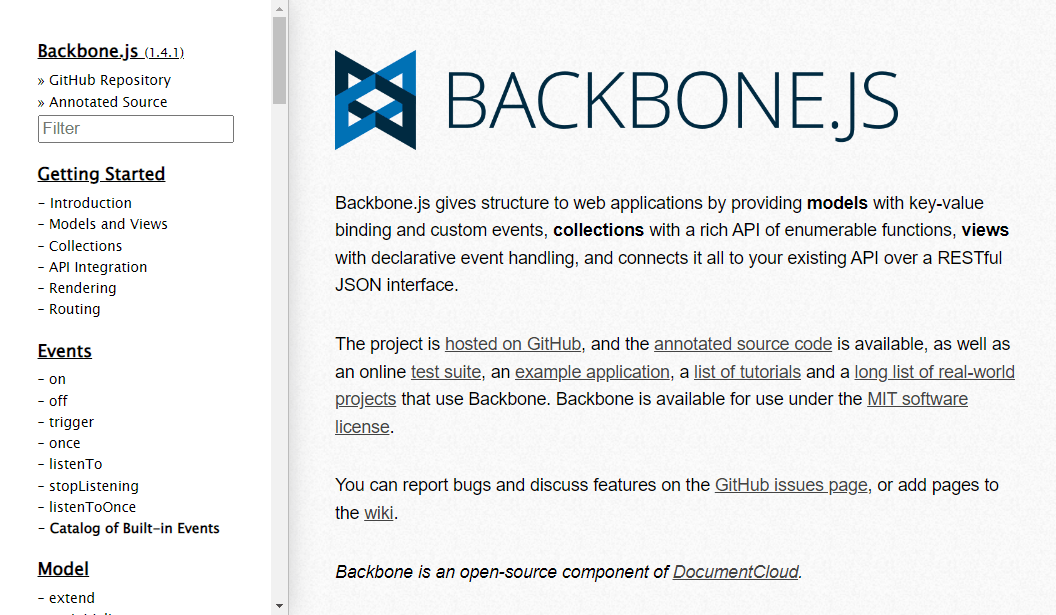
Backbone.js is a front-end development framework that helps developers create single-page web applications. The framework provides a structure for application development, allowing developers to focus on creating the application logic rather than spending time on low-level details. Backbone.js applications are typically composed of a collection of views, models, and routers. Views handle the presentation layer, models manage application data, and routers provide navigation between views. Backbone.js is lightweight and easy to learn, making it a popular choice for front-end development. While the framework can be used with any back-end language, it is often used in conjunction with Node.js to create full-stack JavaScript applications. Backbone.js is an effective tool for building dynamic and responsive user interfaces, and it can be a valuable addition to any developer’s toolkit.
9. Knockout.js
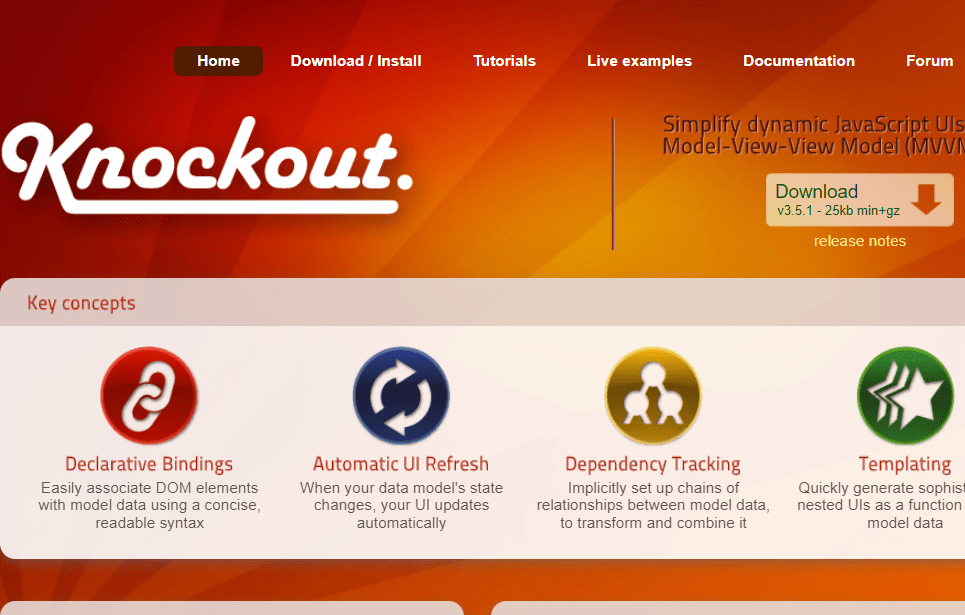
Knockout.js is a front-end development framework that allows developers to create single-page applications using Knockout components. Knockout components are reusable UI elements that can be used in web applications. Knockout.js allows developers to bind data to HTML elements, making it easy to update the UI when the data changes. Knockout.js also provides declarative bindings, which make it easy to bind events to HTML elements.
Knockout is a Javascript library that helps in creating rich, responsive display and editor user interfaces with a clean underlying data model. The Knockout.js library is also small and lightweight, making it easy to use in web applications. Knockout.js is a great choice for developers who want to create single-page applications that are easy to maintain and update.
10. jQuery
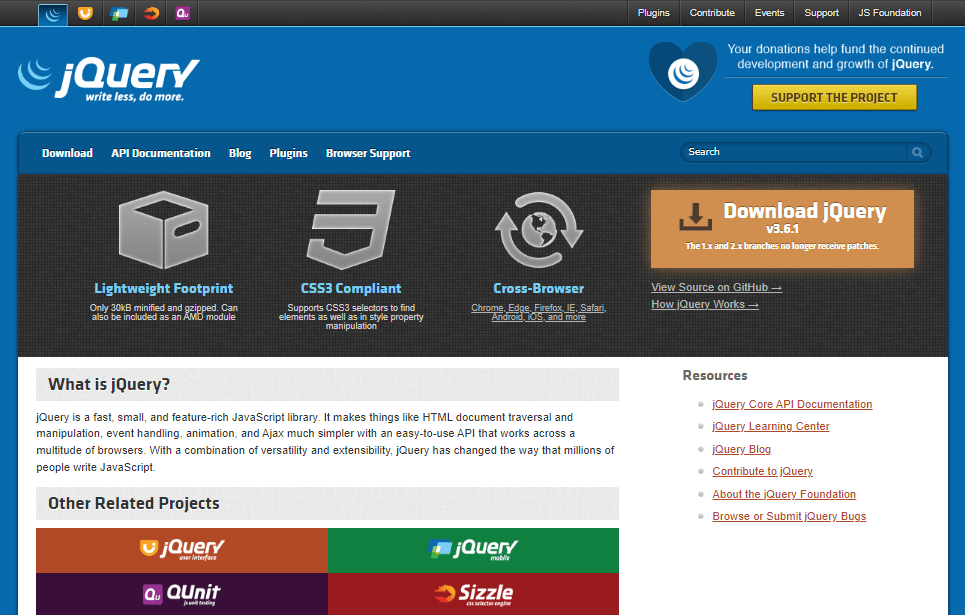
jQuery is a fast, small, and feature-rich JavaScript library. It makes things like HTML document traversal and manipulation, event handling, animation, and Ajax much simpler with an easy-to-use API that works across a multitude of browsers. With a combination of versatility and extensibility, jQuery has changed the way that millions of people write JavaScript.
jQuery is a front-end development framework that developers widely use. It is easy to use and has a wide range of features that make it ideal for developing web applications. jQuery also has a large community of developers who contribute to the project, making it one of the most popular front-end development frameworks. jQuery is also available under an open-source license, making it free to use.
How to Choose a Front-end Framework?
When choosing a front-end framework, there are many factors to consider. The first and foremost thing to consider when choosing a front-end framework is the size and complexity of your project. A big project requires a scalable and easy-to-maintain framework whereas, in a smaller project, you can choose a lighter-weight framework.
The front-end framework needs compatibility with other technologies. If you’re using a specific back-end technology, you’ll need to make sure that your chosen front-end framework is compatible with it. Choosing the right front-end framework can be a daunting task. However, by considering your project requirements and evaluating the available options, you can select the right framework for your project.
Conclusion
The dynamic It industry has made available many front-end development frameworks today. Every Front end framework has its own advantages and disadvantages. Developers can choose the best framework for their projects depending on the project’s specific needs. However, some frameworks are more popular than others, and they tend to be the ones that offer the most comprehensive set of features. The above given are the top 10 front-end development frameworks widely used in the industry. These frameworks are widely used in a variety of projects, and they all offer a great deal of flexibility. As a result, it is important to carefully consider the needs of a project before choosing a particular framework.

I am a passionate, adventurous, and insatiate learner who loves to write about the latest technology trends. My experience working in an MNC has motivated me to understand that there are certain niche requirements for writing strategically about brands’ messages towards people’s interests which I’ve mastered over time through trial and error of many projects under various clients across diverse industries. It is my honest effort to put my experiences and knowledge of industry towards readers.




